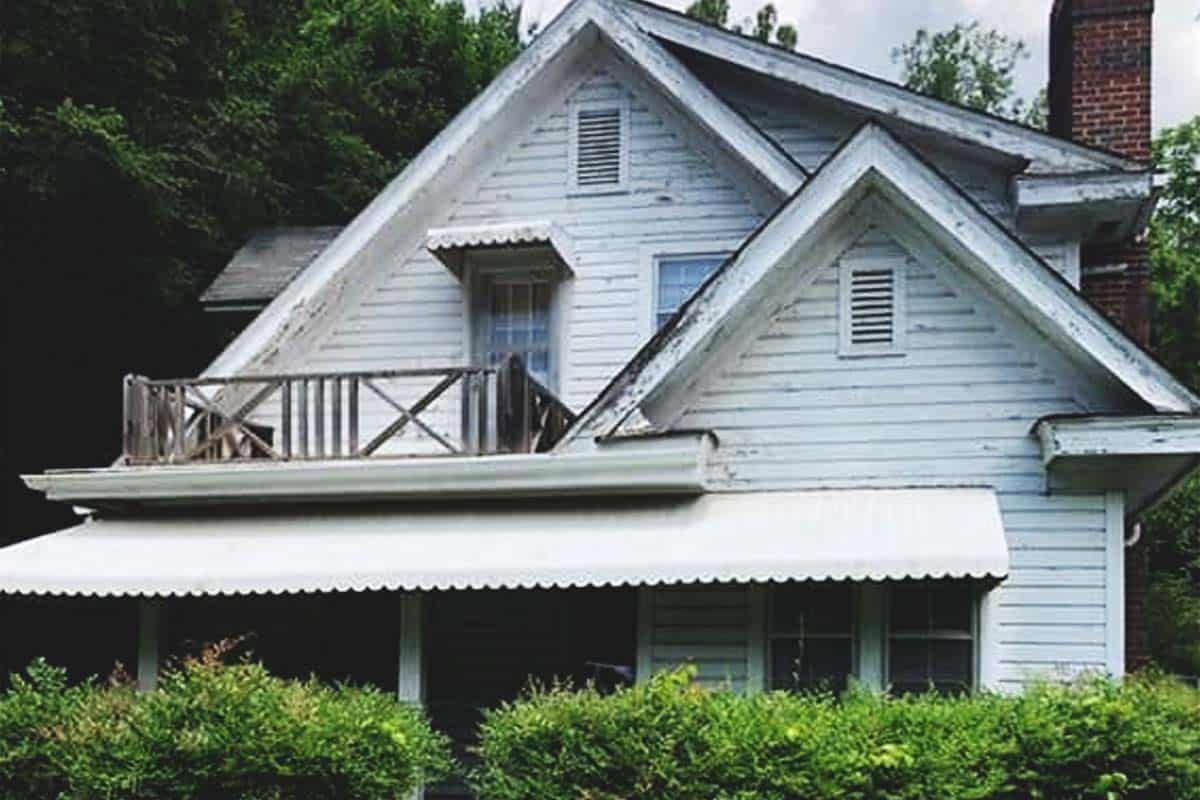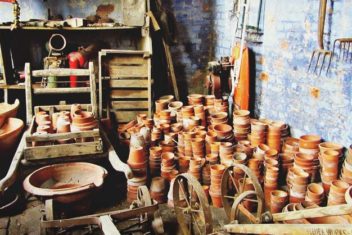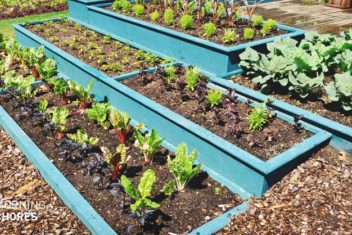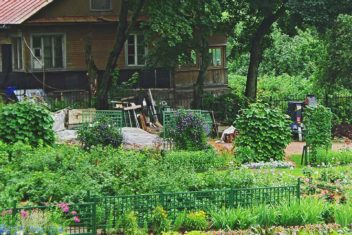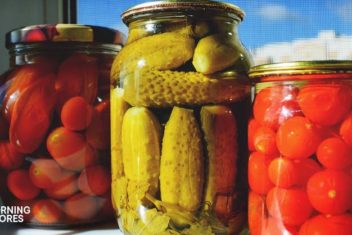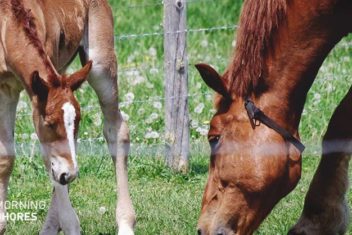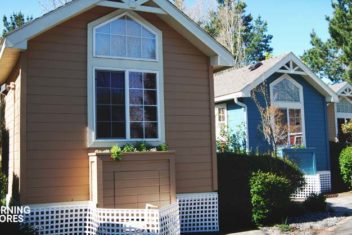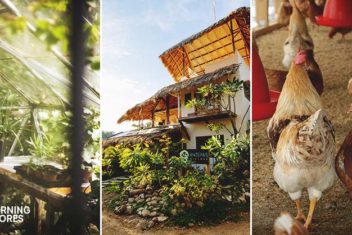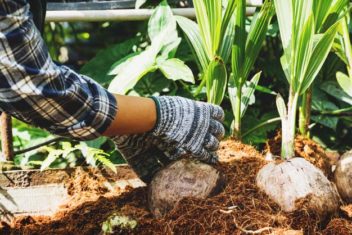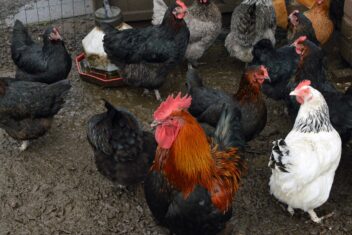When I first started looking for a homestead, I was looking at lots of old farmhouses. I wanted to restore something with a bit of history. Unfortunately, the reality of buying an old farm was a lot more complicated and costly than dreams alone could support.
I did learn a lot about shopping for an old farmhouse and what to look for in that process. Plus, recently my brother and his family did exactly what I had dreamed. They bought a 1927 farmhouse for a good price and set about renovating it.
Based on living vicariously through their experiences and my own attempts to buy a farmhouse, I want to share with you some things to consider before you make the purchase.
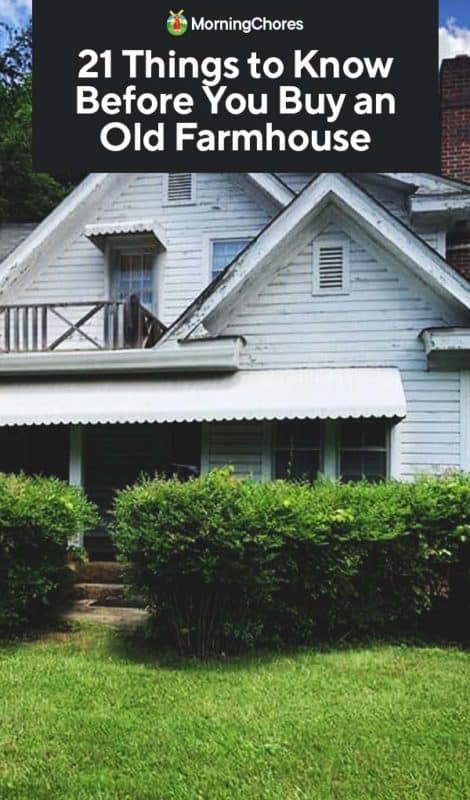
The Catch With an Old Farmhouse
The first thing I need to warn you about is that restoring old farmhouses has become very popular. It’s very hard to find inexpensive farmhouses that will be easy to renovate. Those dreamy, grand old houses are snapped up quickly by savvy, well-funded buyers the moment they appear on the market.
What’s left in inventory, or listed for low prices, are the houses that need a significant amount of work – and funds. Either that or they have dark secrets you need to unearth before buying.
Unearthing Those Dark Secrets
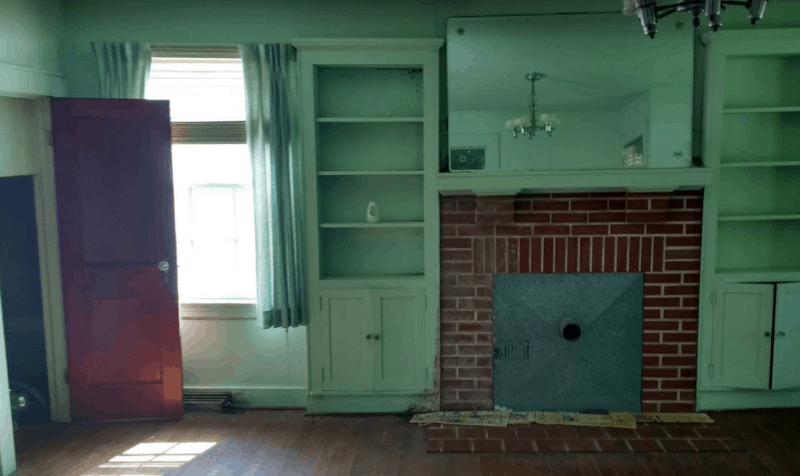
Sometimes those dark secrets are things like lead paint or asbestos. These things require special techniques to remediate and can be quite expensive to deal with safely. Other times the secrets are actually underground.
1. Deeded Mineral Rights
In some cases, older properties have deeded mineral or natural gas rights to corporations. Sometimes the infrastructure for extraction is already in place, but other times, those rights are owned but haven’t been exercised.
That means these companies could later decide to come to do extraction right under the garden soil you’ve spent years improving or right where you placed your barn. Owned but unused extraction rights can be a big problem if you are trying to plan your homestead layout for the long-term.
2. Waste Tank Leakage
Some of the properties we looked at had hazardous septic or livestock waste tank leakages. Due to lack of maintenance the tanks and related plumbing developed faults, decayed, and became dangerous.
In those cases, there were special purchase stipulations that required the hazards be remediated within a short period of time as a condition of the sale. In the examples we came across, that effectively added $15,000 – $30,000 to the cost of the purchase.
3. Property Line Issues
One of the most common problems we came across in farmhouse shopping was problems with property lines. This applied to old farm properties that had been divvied up amongst family, sold, and then re-sold.
The land often sold cheaply because of the mass exodus from rural areas. So, no one invested in surveys. This lead to a lot of confusion about property lines. In some instances, disputes ended up in court or costly deed research was required.
4. Right of Access Issues
In two houses we looked at, the driveway to the houses was on properties that had been sold to other people. The houses were effectively land-locked.
They would have required extensive clearing and long driveway installations to access the road. Alternatively, negotiating driveway rights from the other property owners is an option.
5. Public Infrastructure
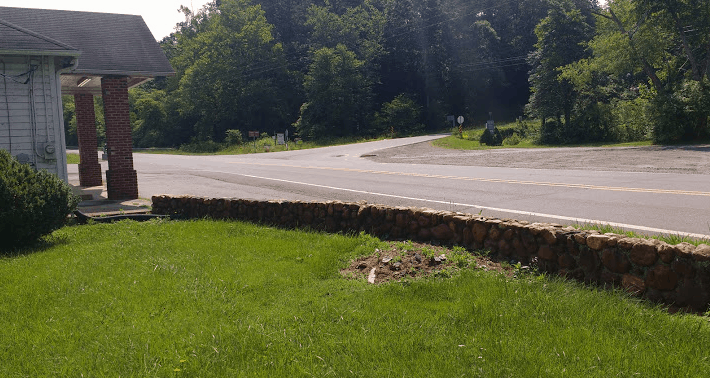
Since it’s much cheaper and easier for public infrastructure to be installed in rural areas, a lot of road construction or underground pipes were built over or through farmlands (especially fallow land). As a result, several of the farms we looked at had their usable land parcels awkwardly divided by roads or utility easements.
Legal and Financial Considerations
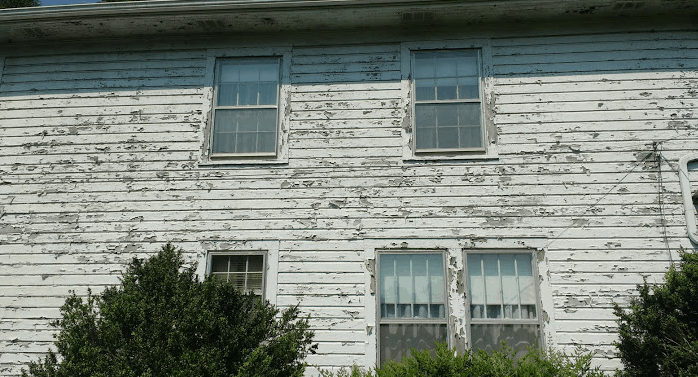
Other than making sure you unearth all the land-based complications, there are also often legal and financial considerations to contend with.
6. Probate Issues
Often old farmhouses come on the market due to the death of the original owners or their descendants. Sometimes there are probate issues pending. Occasionally family members are in dispute over the property divisions.
7. Multiple Owners
If farmhouses and land are left to multiple children or grandchildren, they all have to agree to the sale. Even if they agree to the sale in theory, they might have differences of opinion over the price, the compromises they are willing to make, whether or not they will make repairs to close a deal, and more.
Getting a contract with one party is challenging enough. Trying to negotiate with multiple sellers with different motivations and attachments to the property can make the process nearly impossible. At the very least, expect the closing process to take longer than when dealing with one owner.
8. Zoning Issues
Another factor that came up on several properties related to zoning. Farms that had stores, public grain mills, large dairy operations, etc. might be partially zoned commercial while the family farmhouse is seen as rural or residential.
Since the type of zoning will dictate the kinds of permits you need and your infrastructure decisions, you need to make sure the zoning either works with your plans or can be changed. It can also have an impact on bank financing options.
9. Insurance
If you are going to the trouble of purchasing and renovating a farmhouse, then I am betting you will want to protect your investment by insuring it. The challenge here is that many old farmhouses aren’t up to code.
As such, many insurers won’t extend insurance to a new owner (even if it was previously insured by the old owner). You may have to make big before you can be eligible for insurance which can be risky.
10. Bank Financing
It can also be difficult to get bank financing on old farmhouses. Issues like peeling paint, dilapidated chimneys, hazardous building materials, and more can prevent banks from being willing to underwrite your loan.
When you can get financing, you will often have to put more money down. You may also have to finance your repairs with your loan. The bank might hold you accountable to complete repairs on a contracted schedule.
11. Bank Owned Properties
A lot of old farmhouses are owned by banks due to foreclosure. For reasons I don’t understand, banks aren’t the most motivated sellers.
They generally sell houses as-is and prefer cash offers. They may also refuse full-price offers if they have reasons to believe the property value might go up in the future. So, it can be extra complicated trying to buy an old farmhouse owned by the bank.
Old Farmhouse Renovation Complications
Now, if you are still considering an old farmhouse, I am sure you realize there is going to be a lot of work to do to make it the home of your dreams. Yet, lots of people underestimate the costs and time involved by a long shot.
Here are some things to take into consideration when you are making your cost estimates to get closer to reality.
12. Foundation Issues
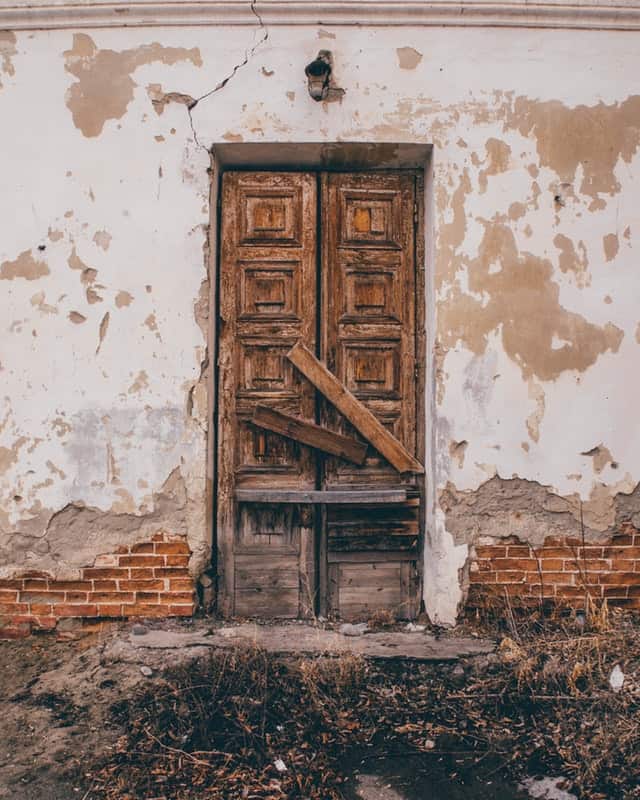
One of the old houses we looked at was stunningly beautiful and in seemingly great condition, but dirt cheap. Upon inspection, we discovered the reason was a faulty foundation.
Basically, the foundation could not be repaired. There was a real risk the house would collapse, particularly given the more violent weather extremes these days. The entire house needed to be moved, then reinstalled on a new foundation.
Cost estimates for a new foundation and moving the house more than doubled the purchase price, making what looked like a good deal a costly and risky investment.
13. Water Safety
Lots of old farmhouses rely on well water. If you live in a place with great water quality, that can be a plus. But wells, especially those that have not been maintained, can also be a source of illness waiting to happen.
Aging well parts, environmental influences, stagnant water, runoff sources, and more can all contaminate groundwater. Also, lead pipes and solder weren’t officially banned from use in plumbing in the US until 1986. So, older pipes might mean greater lead poisoning risks.
Testing the water in advance can be done with either home kits or lab tests:
– Lab Tests
Paying for a complete laboratory water analysis can cost more than $700. Also, if you use a state-run facility to perform the test and your water is toxic, you might be required to remediate the problem before occupancy. Sometimes sellers of old farmhouses won’t even allow full water tests since those results could complicate the future sale.
– Pass/Fail Home Tests
But simpler tests such as a coliform and E. coli pass/fail test or a home-based lead test kit can give you clues as to the condition of your water source. When you combine those results with your home inspection report, that can help you figure out what kind of repairs might be needed for water safety.
14. Water Pressure
While we’re talking about water, you also want to check the water pressure. Residential homes tend to have 40-50 PSI. Levels in the 60-80 psi range, may need to be throttled using a pressure regulator for comfort. More pressure than 80 psi could lead to damaged plumbing and should be investigated to determine the problem.
Low pressure on a well also usually indicates a system problem. It could be a clog, an issue with the well tank or bladder, or other factors.
Costs to repair wells vary dramatically depending on how it was installed and what the problem is. It can be something as simple as replacing a part or as expensive as installing an entirely new system.
15. Oil or Wood Heat
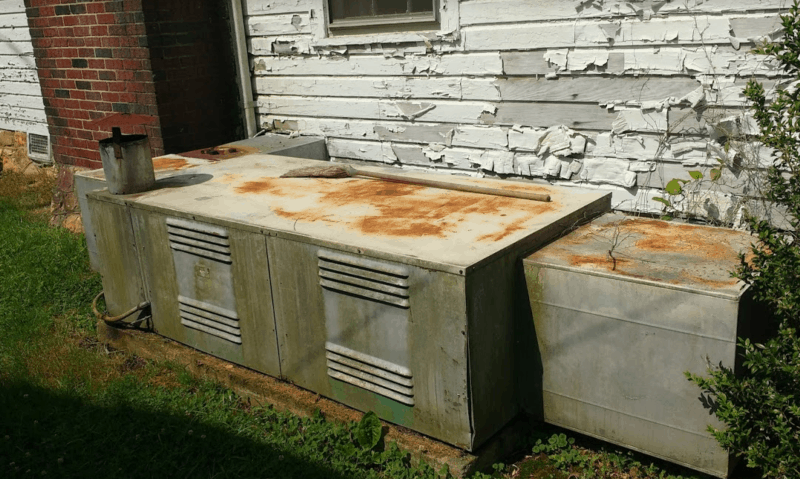
Also, lots of old farmhouses are heated with wood stoves or oil heat. Currently, the cost to heat a house using oil is 2 to 4 times greater than natural gas. So, you may need to increase your budget for winter heating or upgrade to a modern HVAC system to save money in the long run.
Wood-fired stoves can be awesome. But they come with inherent fire risks, more work on your part, and air quality issues. You may want to upgrade to a cleaner burning stove or install an air purifier system to keep your family healthy.
16. Air Conditioning
Central air didn’t even become a thing until the 1970s. So, one of the awesome things about lots of old farmhouses is that they were often built to stay cool in summer just by opening the windows. Still, as temperatures soar higher, and more often these days, AC might be necessary.
17. Electrical
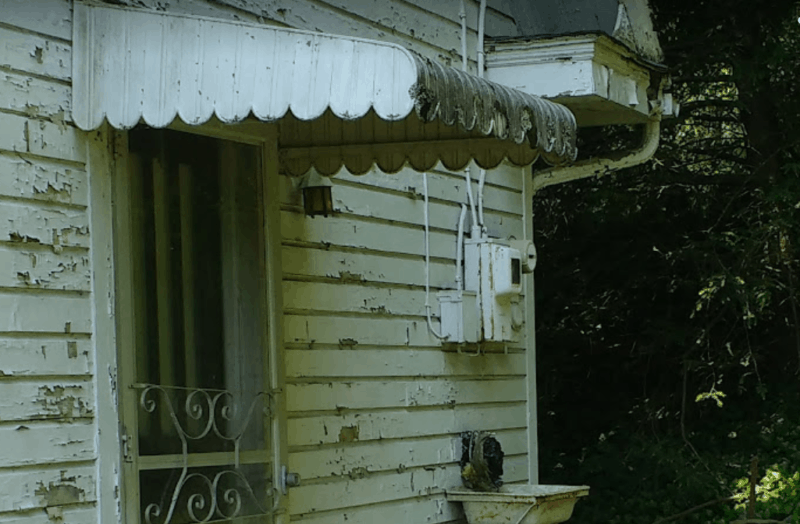
In the past, people didn’t build giant homes in one go. Instead, they built a small house and added on over the years. Often upstairs areas or side wings came later as families grew or as time allowed.
As a result, old homes are often a patchwork of electrical eras. Aluminum, asbestos-insulated, varnished-cloth, and knob and tube wiring, plus others, could all be at work in the same system.
Unless you plan to replace the entire electrical system at once, you’ll need to understand the risk of each of these older wiring systems to make repairs in a piecemeal fashion. You’ll also want to inspect past work to make sure there are no hidden fire risks. You’ll also likely want to put in a modern breaker box to better regulate your system.
18. Appliances
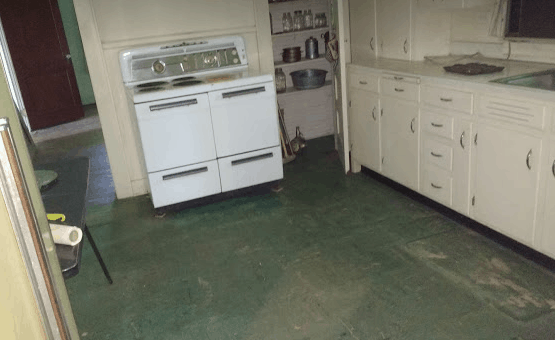
On the subject of electrical stuff, old farmhouses often have old appliances that need to be updated with newer, more energy-efficient models. Depending on the age and condition of the house, that might not be so easy.
You may have to create places for dryers and install wiring and ventilation. You may have to remove cabinets and plumbing and add outlets for dishwashers. Refrigerator icemakers may require the addition of a water source.
You could always just go old school on these things. But, once you’re accustomed to the giant refrigerators common today, it’s tough to get by with the tiny iceboxes of the past.
19. Landscaping Hazards
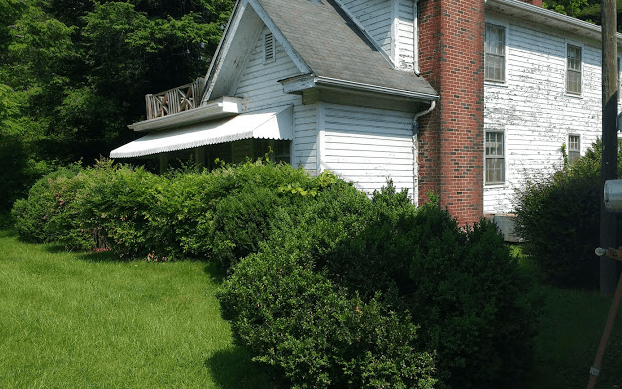
Another great thing about old farmhouses is they often have mature landscaping. Those lovely big oaks with tire swings, or lilacs full of blooms, are a bonus. Sometimes though, neglected landscaping can be extremely costly or time consuming to control.
Addressing overgrown hedges, suckering plants that have spread, roots too close to the house, diseased trees too large to fell without cranes, and more can all raise the price of making an old farmhouse safe for your family.
20. Outbuildings
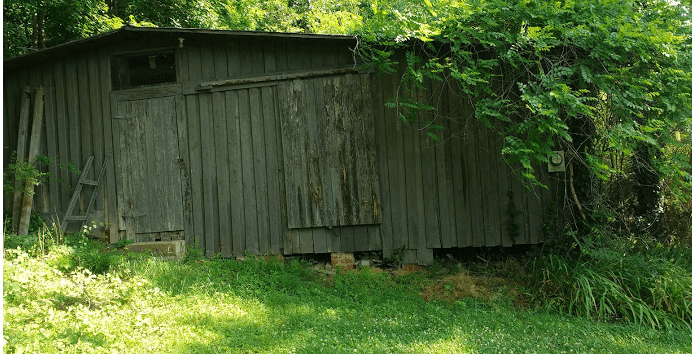
Outbuildings in good shape make homesteading much easier. But, falling down messes, no matter how charming, are a different story. With old barnwood building being all the rage these days, buyers often think those half-collapsed barns are going to be easy money.
Unfortunately, they are more often just termite, mold, or critter infested disaster areas that no one is interested in salvaging, and create an additional fire hazard. They can make it difficult to get your property insured. They can detract from the aesthetics. Plus, they can pose safety hazards for your kids or livestock.
Make sure you know what your barns are made of and how difficult it will be to repair or remove them before you buy. Otherwise, you could be in for a lot of work or a long-term eyesore/safety hazard.
21. Home Sweet Home
The last thing I want you to know about buying an old farmhouse is that even the less than perfect ones are often worth restoring as long as you have the budget. Old farmhouses still standing and worth saving are historic treasures.
When you peel back the awful Masonite board and discover hardwood, hand-milled beadboard, your soul soars. When you lift that hideous carpet and find gorgeous, hardwood planks it’s like striking gold.
After several years of renovations, when you sit on your gorgeously restored 100-year-old porch, on your barn wood built swing and you feel totally at home, you’ll know that every moment and every penny were well-spent.
